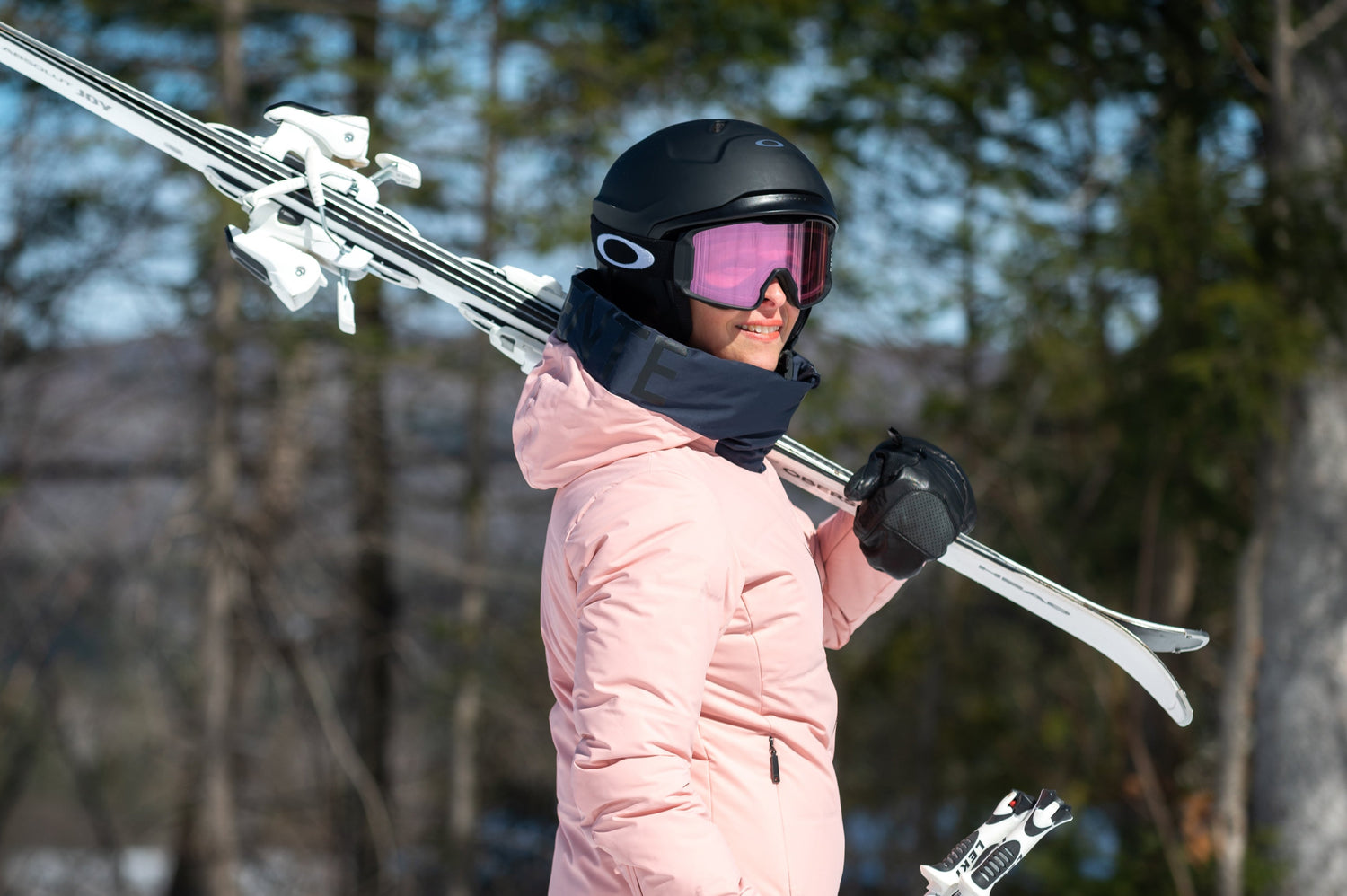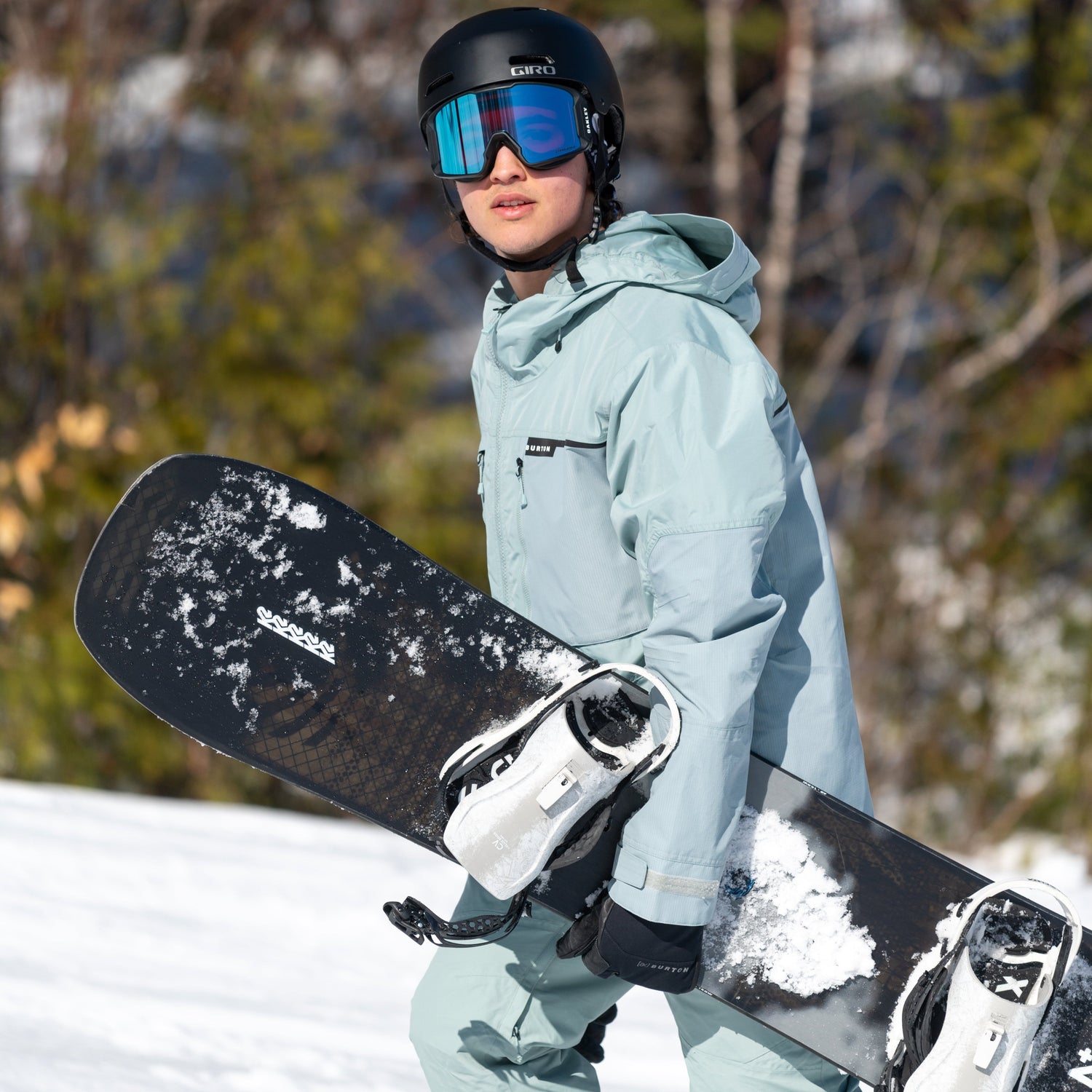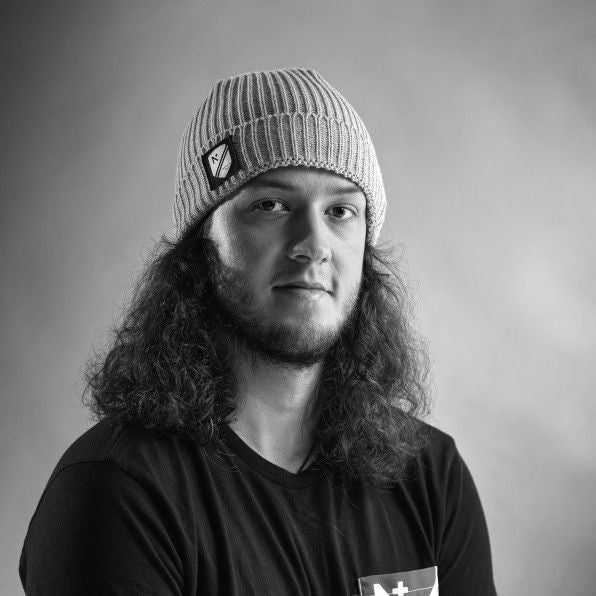Customers come to the store to buy the board that will give them the most me-mo-ra-ble season ever. Looking at the colourful array of different shapes, they realize that they're all different. Then there's the profile—the curvature of the board (or lack thereof) when viewed from the side when there's no pressure on it. Different profiles have characteristics that will have an impact on your ride.
If you want to learn what you need to get started in snowboarding, read our article "Snowboarding Buyer’s Guide: Everything You Need to Get Started."

What's camber?
The first snowboards designed for resort use featured camber (the very first models were flat and meant for backcountry riding at a time when snowboards were still banned from ski areas). A board is said to have camber when the curve of the base is raised a few millimetres in the middle. This type of profile is more responsive and stores positive energy. Once that energy is released, it helps the rider hold an edge and get more pop at high speeds. Cambered boards excel on hardpack. In the snow park, they’re stable and precise on jumps and halfpipe walls.
Key points
-
Classic, responsive profile for precision and pop
-
Ideal for groomers, jumps, and halfpipes
-
Suited to intermediate and advanced riders

What's rocker?
The rocker (aka reverse camber) has an inverted camber; that is, instead of curving up, it curves down, making the middle of the board the low point, much like a banana. In fact, Lib Tech calls rocker "banana technology"! This profile makes turn initiation almost effortless and lowers the risk of catching an edge. It's recommended for beginners and helps them progress from one season to another.
The riders who love to spend their days in the woods or chasing powder are also good candidates for rocker. Because the nose and tail stay above the surface, rocker offers excellent manoeuvrability and a surfy feel. This makes it easier to control the board and get into the flow while weaving through trees. It also provides more control and stability in wet snow or crud and at low speeds.
In the snow park, rocker is all about playfulness. Presses and spins are easier thanks to the raised contact points and surfy feel. The forgiving shape also helps you pull off imperfect or under-rotated landings. For jibbing, it’s a major asset—the board slides more freely on rails and boxes with less risk of catching an edge.
Key points
-
Easiest to turn and most forgiving
-
Excellent float in powder
-
Ideal for beginners and freestyle riders
-
More stable in slush and crud

What's a flat profile?
A flat profile is highly versatile. It strikes an excellent balance between camber and the rocker. A flat board floats in powder and offers great edge control on groomed runs. Its neutral platform makes edge-to-edge transitions smoother, giving it a nimble feel in the trees and reassuring stability for progressing riders.
Key points
-
Balanced feel between camber and rocker
-
Great edge control and powder float
-
Stable, easy to ride, and confidence-boosting

What's a hybrid profile?
The best of both worlds! The traditional and reverse combo gives you great handling and responsiveness. This versatile profile performs well on any terrain. The rocker-camber offers excellent edge control while enabling the rider to float over fresh powder.

Hybrid cambers come in many variations—including camber-rocker-camber, rocker-camber-rocker, and even flat-camber—each offering a different balance of stability, pop, edge hold, float, and playfulness. They’re a top choice for all-mountain riders looking for a board that excels everywhere from groomers to snow parks and glades.
Key points
-
Combines camber precision with rocker float
-
Many variations (camber-rocker-camber, etc.)
-
Best for all-mountain performance

FAQ — Choosing a Snowboard Profile
Which snowboard profile is best for beginners?
Rocker and flat boards are the most forgiving and easier to control, making them ideal for new riders.
Which snowboard profile is best for carving?
Camber boards deliver the most precise edge hold and power transfer on groomed runs.
Which snowboard profile is best for powder?
Rocker profiles float naturally in deep snow thanks to their raised nose and tail.
What is the most versatile snowboard profile?
Hybrid profiles balance stability, control, and manoeuvrability—perfect for all-mountain riding.
In a nutshell, a profile that's adapted to your riding style will optimize your on-hill experience. Although the choice is largely a matter of personal preference, an expert at one of our stores can help guide you toward the board that will make your season truly epic!
If you want comprehensive guidance on purchasing a snowboard, see our article "How to Choose a Snowboard?"



